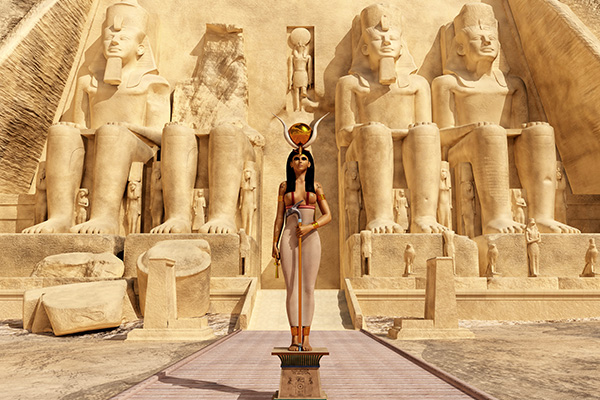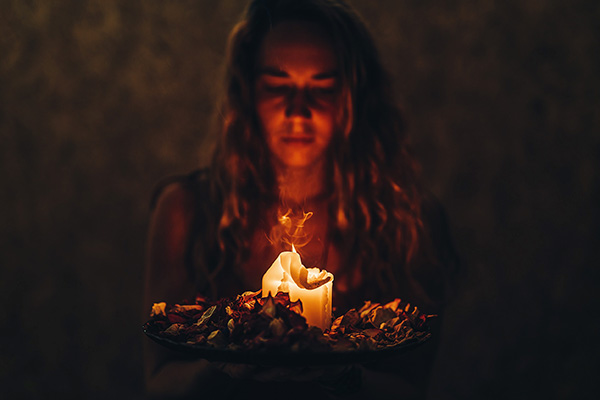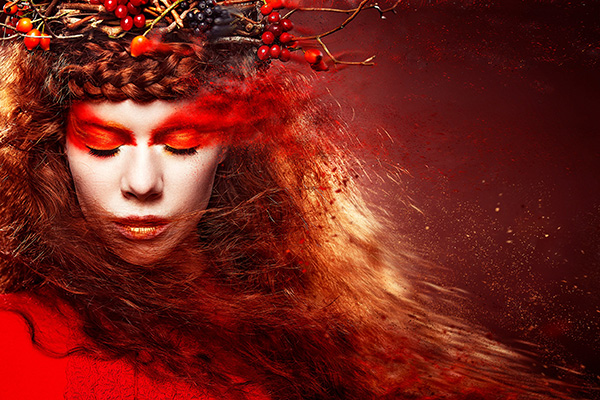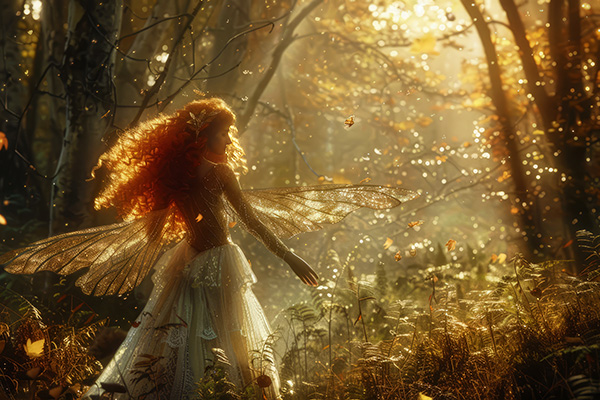deities
Power And Protection From Your Ancestors
 I come from a long line of female herbalists of European origins on my mother’s side of the family. They were seers, healers, and prophets who combined their psychic gifts with ancient healing practices. Today, they still come to me during meditation, to offer wisdom.
I come from a long line of female herbalists of European origins on my mother’s side of the family. They were seers, healers, and prophets who combined their psychic gifts with ancient healing practices. Today, they still come to me during meditation, to offer wisdom.
The family’s mainly Germanic connection is one I’ve researched for many years, but more recently I discovered that my ancestors crossed into Scandinavian and Norse territories too, which suggests a bloodline of fierce women who were warriors of their time.
It’s really not surprising to me, as even my own mother today, who is 84 years old, can still kick anyone’s butt who crosses her path in an unkind way! I always knew she was strong when I was little, and I always admired her power and independence.
I was born in the year 1966, which in Chinese Astrology equates to the year of the Fire Horse. Fire Horse people are only born once every six decades. It is a rare sign and, according to legend, many girl babies born in certain parts of Asia in that year were killed at birth, because they were believed to be dangerous, uncontrollable or resistant to rules or dogma.
My Fire Horse nature shows up in me from time to time, but only when I’m really pushed beyond reason by someone who is taking advantage of, or harming me, or my children.
Life will sometimes push us to step into our core strength and fight for what is right. There are many people on the spiritual path who feel stepping into your true power or fighting for what is right is ‘unspiritual’ or egotistic.
What I Learned From Egyptian Goddess Hathor
 From the moment I first encountered her, Hathor, the ancient Egyptian goddess, she felt like a luminous companion on my spiritual path.
From the moment I first encountered her, Hathor, the ancient Egyptian goddess, she felt like a luminous companion on my spiritual path.
To me she isn’t just a myth or a symbol. She’s a living presence and a spiritual guide. She’s also a gentle yet powerful presence in my psychic and healing work. Her energy speaks to me on a deeply intuitive level.
My connection with Hathor began unexpectedly while reading a book on ancient Egypt. Suddenly, I felt a comforting warmth surround me. It was as if a long-lost friend had returned.
Then, I was guided to raise my hands, palms facing outward and I sensed her hands and palms facing mine. A glow of golden light flashed before me and I felt a warm sensation entering my palms and almost as though my hands were being supported and held, and all time was suspended.
In that timeless and powerful moment, Hathor’s nurturing love enveloped me, and her ancient wisdom whispered that time is merely a construct.
In the Infinite Light, there is no past or future, only this sacred now. In is in the present moment that healing and miracles unfold.
As a psychic, I find that Hathor naturally aligns with my practice. She is not just the goddess of love and beauty, though she radiates both. She embodies a vibrant, nurturing energy that opens emotional and spiritual channels.
Samhain Ritual For Personal Tranformation
 One of the most mystical and energetically powerful times in the metaphysical calendar is upon us again tomorrow. Samhain, also known as the Celtic New Year, is a sacred festival celebrated on October 31st.
One of the most mystical and energetically powerful times in the metaphysical calendar is upon us again tomorrow. Samhain, also known as the Celtic New Year, is a sacred festival celebrated on October 31st.
Samhain traditionally marks the end of the harvest season and the beginning of the winter. It is a time to honor our ancestors, reflect on the thinning veil between the physical and spirit realms, and set intentions for the new annual cycle ahead.
Samhain holds special significance for those who are attuned to the cycles of nature and the spirit world. Traditionally, the boundaries between the physical and spirit realms were believed to be at their thinnest on this night.
The Celts and Norse in particular saw it as a time when communication with ancestors, departed loved ones and the gods was most possible, providing guidance for the future. For the Vikings and other northern European cultures, Samhain was also a time for divination. Runes, symbols of cosmic wisdom, were often used to gain insight into the coming year.
This year, Samhain carries a particularly powerful energy as it coincides with the Waning Crescent Moon’s transition from Libra to Scorpio. This last lunar phase before renewal invites us to release what no longer serves us, and its journey from the balanced, harmonious energy of Libra into the intense, transformative depths of Scorpio will amplify this process.
Libra’s influence encourages reflection on relationships, inner balance, and the need for harmony, while Scorpio’s energy propels us toward deeper introspection, emotional transformation, and embracing the mysteries of life, death, and rebirth.
The Fairies Will Find My Pets’ Final Resting Place
Over the years, as I have expanded my spiritual understanding and esoteric knowledge, I have come to rely on a number of spiritual entities and metaphysical beings for guidance and support on a daily basis. This assistance from the higher realms is vital not only in my professional work as a psychic reader and healer, but also in my personal life.
I have learned that calling upon different spiritual beings for different things provides me with more holistic and powerful guidance, protection and support in different areas of my work and life. Different types of spiritual beings serve a unique purpose according to their inherent qualities and roles.
For example, I turn to my ancestors and guardian angel for personal safety and comfort, feeling their presence as a calming and protective force, especially during very difficult times. My ancestors also provide me with personal insight and a sense of continuity, helping me to navigate everyday challenges and connect with my cultural and family roots.
My spirit guides counsel and support me in my professional psychic and healing practice, as well as in my spiritual growth and life journey. They provide me with insight and wisdom to make informed life choices and decisions. At times, I call upon one of the archangels, such as Michael or Raphael, for more specific needs, such as protection from physical harm or for physical healing, to draw upon their specialized energies.
The ascended masters and the divine I call upon for deeper spiritual enlightenment, higher consciousness, and to cultivate specific spiritual virtues such as compassion, humility, gratitude, forgiveness, patience, generosity, integrity, and courage.
Invoking The Power And Beauty Of Freya
 The goddess Freya has a special place in my spiritual self-care routine. I often turn to her when I need extra guidance and support.
The goddess Freya has a special place in my spiritual self-care routine. I often turn to her when I need extra guidance and support.
Freya is the ancient Norse goddess of love, beauty, fertility, and war. She is one of the most important deities in Norse mythology, embodying the ultimate ancient archetype for ‘girl power’ and ‘boss lady’ energy.
She is traditionally revered for her deep wisdom, boundless compassion, and fierce protection. Invoking her divine feminine power has brought much transformative and empowering energy to many aspects of my life.
In Norse folklore, Freya rides a chariot drawn by two large, powerful cats and is often depicted wearing the Brísingamen necklace, a symbol of her power and beauty.
The Brísingamen was created by four dwarves known for their exceptional craftsmanship. The necklace symbolizes beauty, desire and the power of attraction. It also represents Freyja’s connection to the earth and its fertility.
Freya is the leader of the Valkyries, the warrior maidens who choose those who may die and those who may live in battle. Freyja is said to receive half of the slain warriors in her heavenly field, Fólkvangr, while the other half go to Odin’s hall, Valhalla.
This dual role highlights her authority and revered status among the gods, bridging the realms of life and death. The Valkyries, under her guidance, serve not only as fierce selectors of the fallen but also as protectors and guides for these chosen souls, ensuring their honored place in the afterlife.


